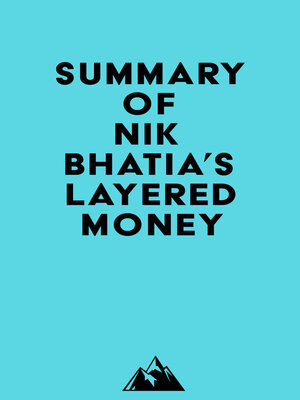
Sign up to save your library
With an OverDrive account, you can save your favorite libraries for at-a-glance information about availability. Find out more about OverDrive accounts.
Find this title in Libby, the library reading app by OverDrive.



Search for a digital library with this title
Title found at these libraries:
| Library Name | Distance |
|---|---|
| Loading... |
Please note: This is a companion version & not the original book. Sample Book Insights: #1 Money is a tool that allowed humans to progress away from reciprocal altruism, where animals exchange favors. Humans have used seashells, animal teeth, jewelry, livestock, and iron tools as tokens of barter for tens of thousands of years, but eventually settled on gold and silver as globally accepted forms of currency. #2 The first coins were made by the Lydians around 700 BC. They were embossed with an image of a roaring lion and weighed 126 grains, which is about 8 grams. Because all coins had a precise amount of gold, they could then be used as a unit of account. #3 The Roman Empire is a great example of how coins led to government influence over currency. In the first century AD, coins called denarii were minted by the government in Rome, and due to the empire's worldwide expanse, they were used across Europe, Asia, and Africa. #4 The northern Italian cities of Florence, Venice, Genoa, and Pisa established themselves as city-republics in the 11th century, and their newfound independence was later marked by the coinage of their own money. The Florentine florin was the first gold florin, and it became the international monetary standard for pan-European finance.







